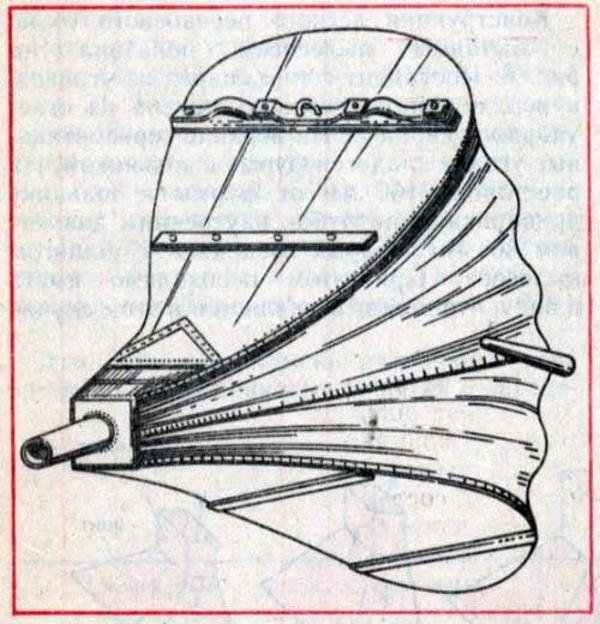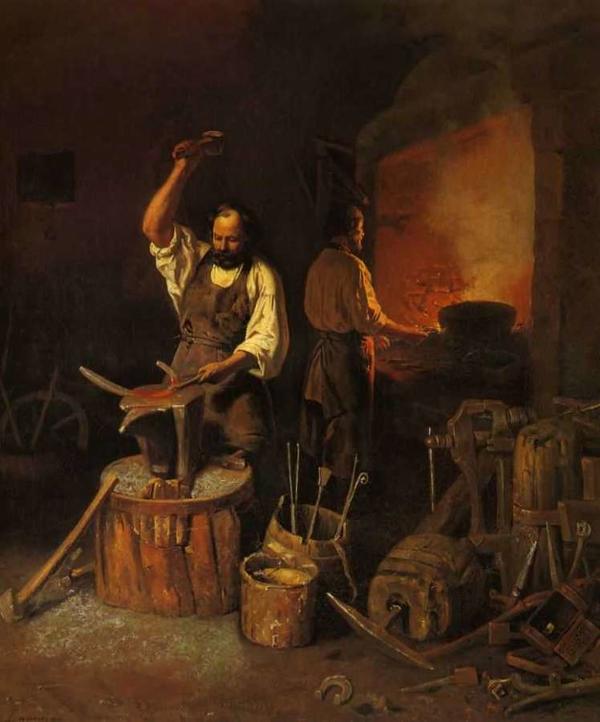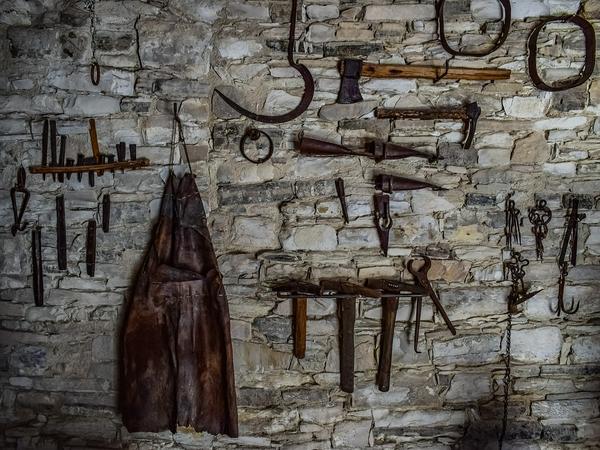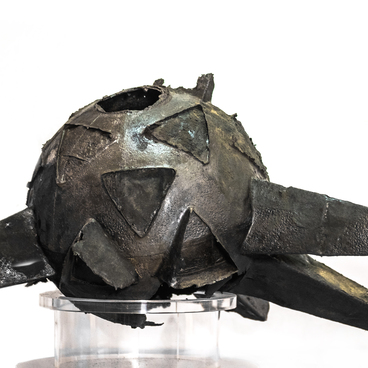Bellows were used to blow air during the forging of iron. They consisted of a flexible leather bag with valves and regulators. The bellows in the collection of the Nevyansk Historical and Architectural Museum consist of a head in the form of a truncated wooden pyramid made with three teardrop-shaped boards attached to it: the upper and lower ones are fastened with hinges, and the middle one is rigidly fixed.
Bellows
Creation period
Early 20th century
Dimensions
85 cm × 45 cm ×106 cm
Technique
Handmade elements, woodwork, forging
Collection
6
Open in app#1
Bellows
#3
#4
Bellows
#5
The bellows helped to keep the metal bars hot. At first, the metal was heated to a temperature of 1,500–1,600°C, or, in blacksmith parlance, ‘to white heat, ’ when it began to glow with a bright yellow color. After that, having removed dross from the metal surfaces, they were joined by hitting with a hammer.
#12
Experienced blacksmiths knew how to determine the temperature of the metal using their own beards. The master brought a red-hot bar to his face, and if the hairs in the beard began to crackle and curl, the iron was sufficiently heated and it was possible to start forging.
#13
There was no lighting in the blacksmith’s shop: the only source of light was the forging furnace. In the semi-darkness it was easier for blacksmiths to watch the shades of the hot metal and keep the temperature under control. Overheated iron became brittle, and products from it broke and crumbled. If the metal was not hot enough, it was very difficult, if not impossible, to process it.
#6
Structure of the blacksmith’s shop
#14
Blacksmithing was one of the most widespread activities in the Nevyansk plant since the 18th century. This was due to the profile of the metallurgical plant, the presence of skilled craftsmen and of raw materials for production. Blacksmiths' shops were usually located on the outskirts of the village, away from residential buildings: the work of blacksmiths was closely related to fire, and in the event of a fire, it would not spread to residential buildings.
#15
In the center of the blacksmith’s shop there was usually a forge, with an anvil next to it. The main tools of the blacksmith were the bellows, used to blow up the fire, as well as hammer, tongs and vice. Various types of iron, steel, and sometimes sheet copper were used as material. Blacksmiths made metal tools, household utensils, chains, harnesses, cowbells, bells and much more, both for sale and for their own needs.
#8
Blacksmith’s tools
#16
State Autonomous Cultural Institution of the Sverdlovsk Region “Nevyansk State Historical and Architectural Museum”
read morehide
00:00
00:00
1x
Bellows
Creation period
Early 20th century
Dimensions
85 cm × 45 cm ×106 cm
Technique
Handmade elements, woodwork, forging
Collection
6
Open in app
Share



